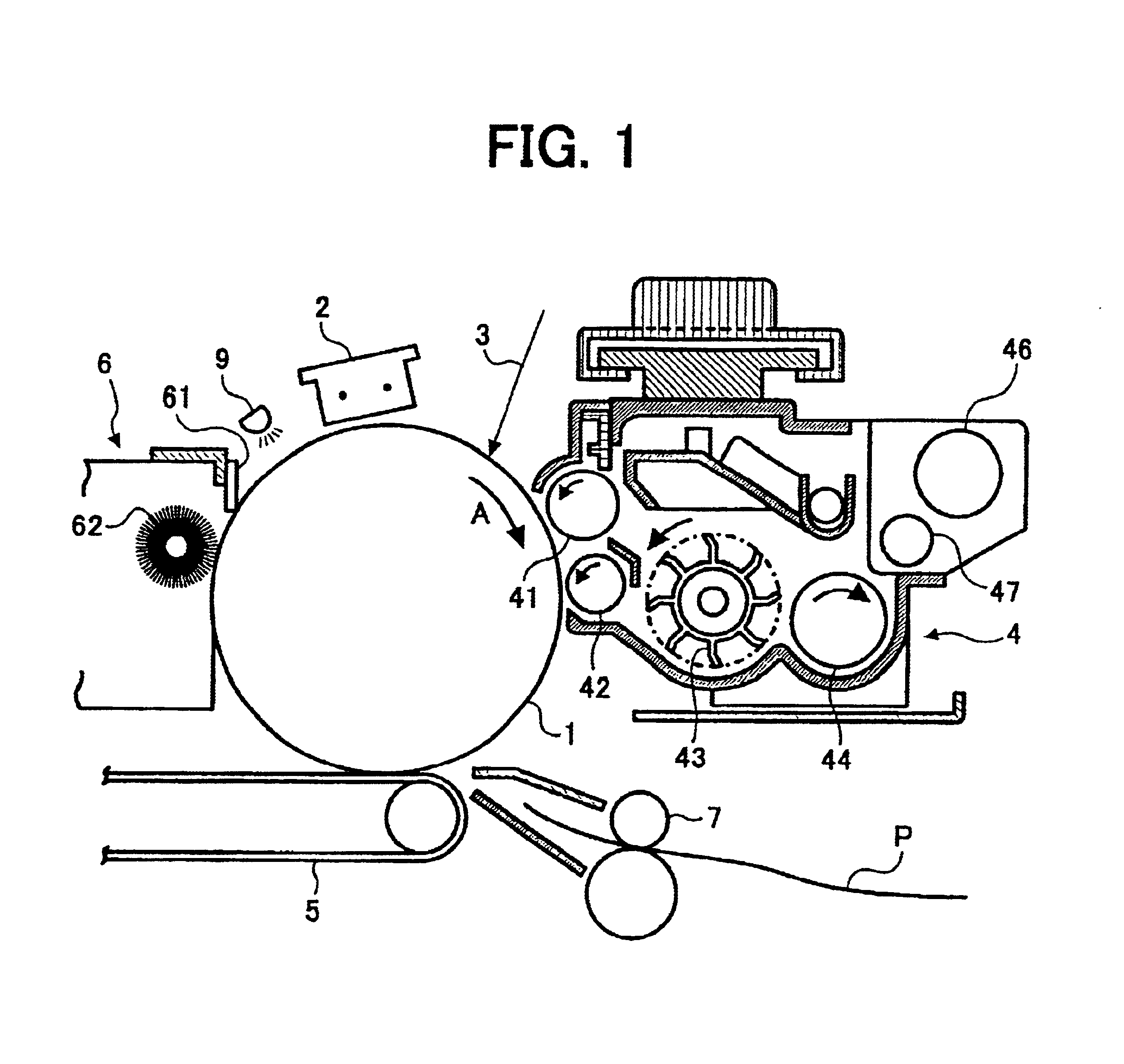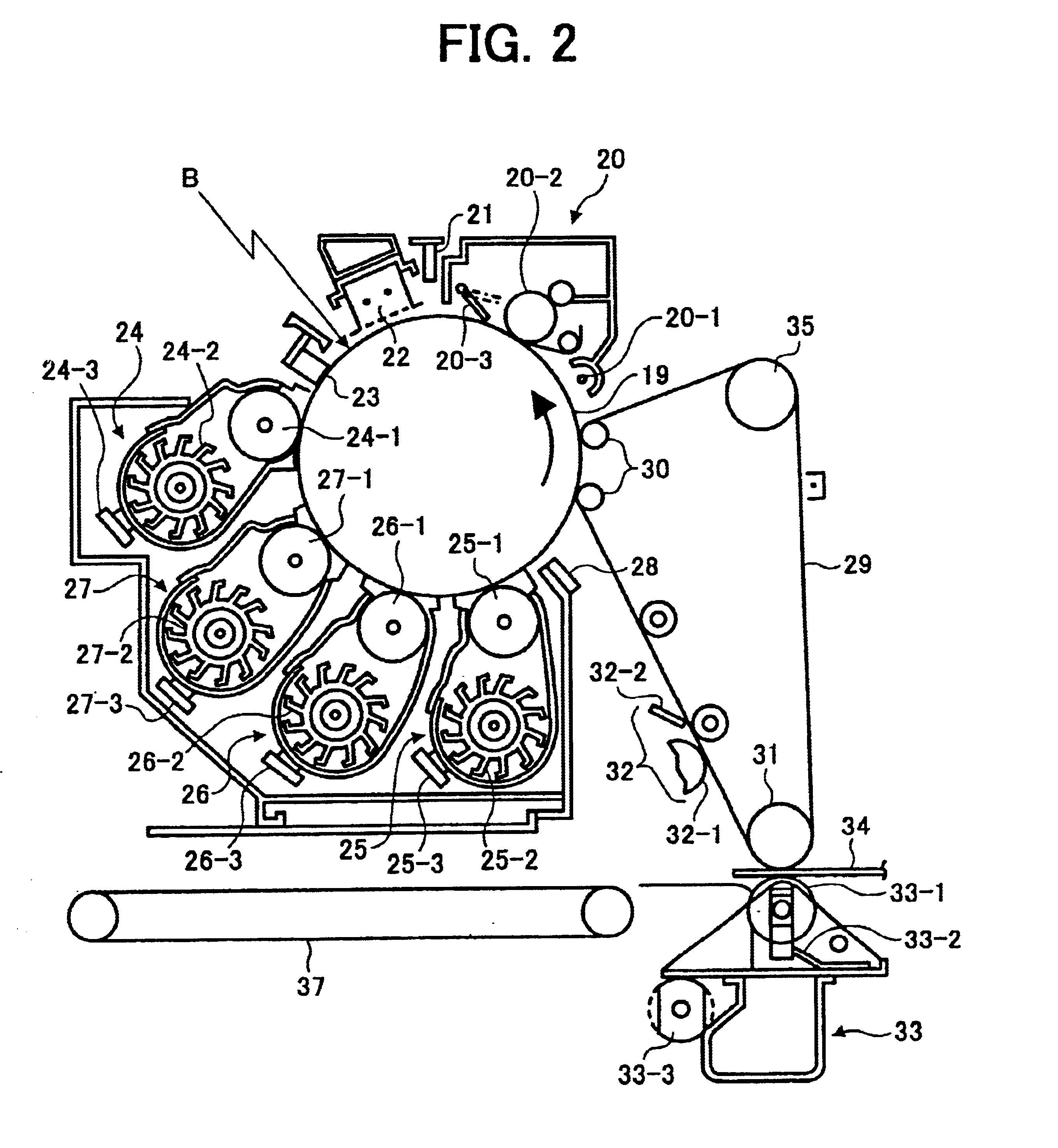Toner and image forming apparatus using the toner
a technology of toner and image forming apparatus, which is applied in the direction of electrographic process apparatus, instruments, developers, etc., to achieve good charge stability, good half tone reproducibility, and good fine line reproducibility
- Summary
- Abstract
- Description
- Claims
- Application Information
AI Technical Summary
Benefits of technology
Problems solved by technology
Method used
Image
Examples
example 1
(Preparation of Toner Binder)
In a reaction container having a condenser, a stirrer and a pipe from which a nitrogen gas was supplied to the container, 690 parts of an adduct of bisphenol A with 2 moles of ethyleneoxide, 256 parts of isophthalic acid and 2 parts of dibutyl tin oxide were mixed. Then the mixture was reacted for 8 hours at 230° C. under a normal pressure. Then the reaction was further performed for 5 hours under a reduced pressure of from 10 to 15 mmHg. After the reaction product was cooled to 160° C., 18 parts of phthalic anhydride were added thereto to further perform a reaction for 2 hours. Then the reaction product was cooled to 80° C. The reaction product was mixed with 188 parts of isophorondiisocyanate in ethyl acetate and reacted for 2 hours to prepare a prepolymer (1) having an isocyanate group.
Then 267 parts of the thus synthesized prepolymer (1) were reacted with 14 parts of isophoronediamine for 2 hours at 50° C. Thus, a urea-modified polyester (1) was prep...
example 2
(Preparation of Toner Binder)
Similarly to the method performed in Example 1, 314 parts of an adduct of bisphenol A with 2 moles of ethyleneoxide, 314 parts of 256 parts of bisphenol A with 2 moles of propyleneoxide, 274 parts of isophthalic acid and 20 parts of trimellitic anhydride were subjected to a polycondensation reaction. After the reaction, the reaction product was mixed with 154 parts of isophorondiisocyanate to prepare a prepolymer (2) having an isocyanate group.
Then 213 parts of the thus synthesized prepolymer (2) were reacted with 9.5 parts of isophoronediamine and 0.5 parts of dibutylamine similarly to the method performed in Example 1. Thus, a urea-modified polyester (2) was prepared.
Similarly, 670 parts of an adduct of bisphenol A with 3 moles of ethyleneoxide, 230 parts of terephthalic acid and 35 parts of maleic acid were condensation-polymerized for 10 hours at 210° C. under a normal pressure. Then the reaction was further performed for 5 hours under a reduced pres...
example 3
(Preparation of Toner Binder)
Thirty (30) parts of the urea-modified polyester resin (1) and 970 parts of the unmodified polyester resin (a) were dissolved in 2,000 parts of ethyl acetate to prepare an ethyl acetate solution of a toner binder (3). A part of the solution was dried to prepare a dry toner binder resin (3).
(Preparation of Toner Composition)
The procedure for preparation of the toner composition in Example 1 was repeated except that the toner binder resin (1) was replaced with the toner binder resin (3).
Thus, a cyan toner composition (3) of the present invention was prepared.
PUM
| Property | Measurement | Unit |
|---|---|---|
| volume average particle diameter | aaaaa | aaaaa |
| glass transition temperature | aaaaa | aaaaa |
| specific surface area | aaaaa | aaaaa |
Abstract
Description
Claims
Application Information
 Login to View More
Login to View More - R&D
- Intellectual Property
- Life Sciences
- Materials
- Tech Scout
- Unparalleled Data Quality
- Higher Quality Content
- 60% Fewer Hallucinations
Browse by: Latest US Patents, China's latest patents, Technical Efficacy Thesaurus, Application Domain, Technology Topic, Popular Technical Reports.
© 2025 PatSnap. All rights reserved.Legal|Privacy policy|Modern Slavery Act Transparency Statement|Sitemap|About US| Contact US: help@patsnap.com


